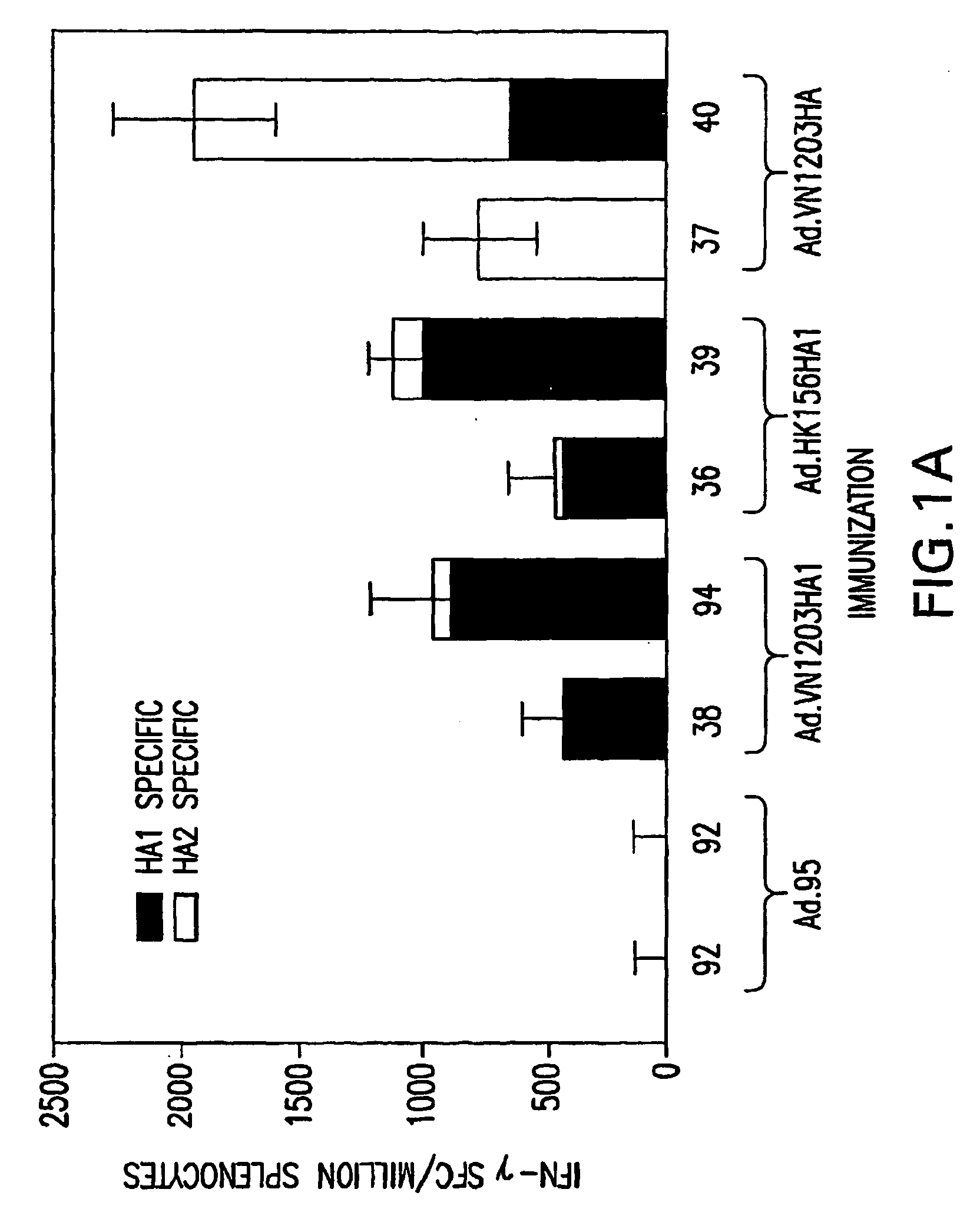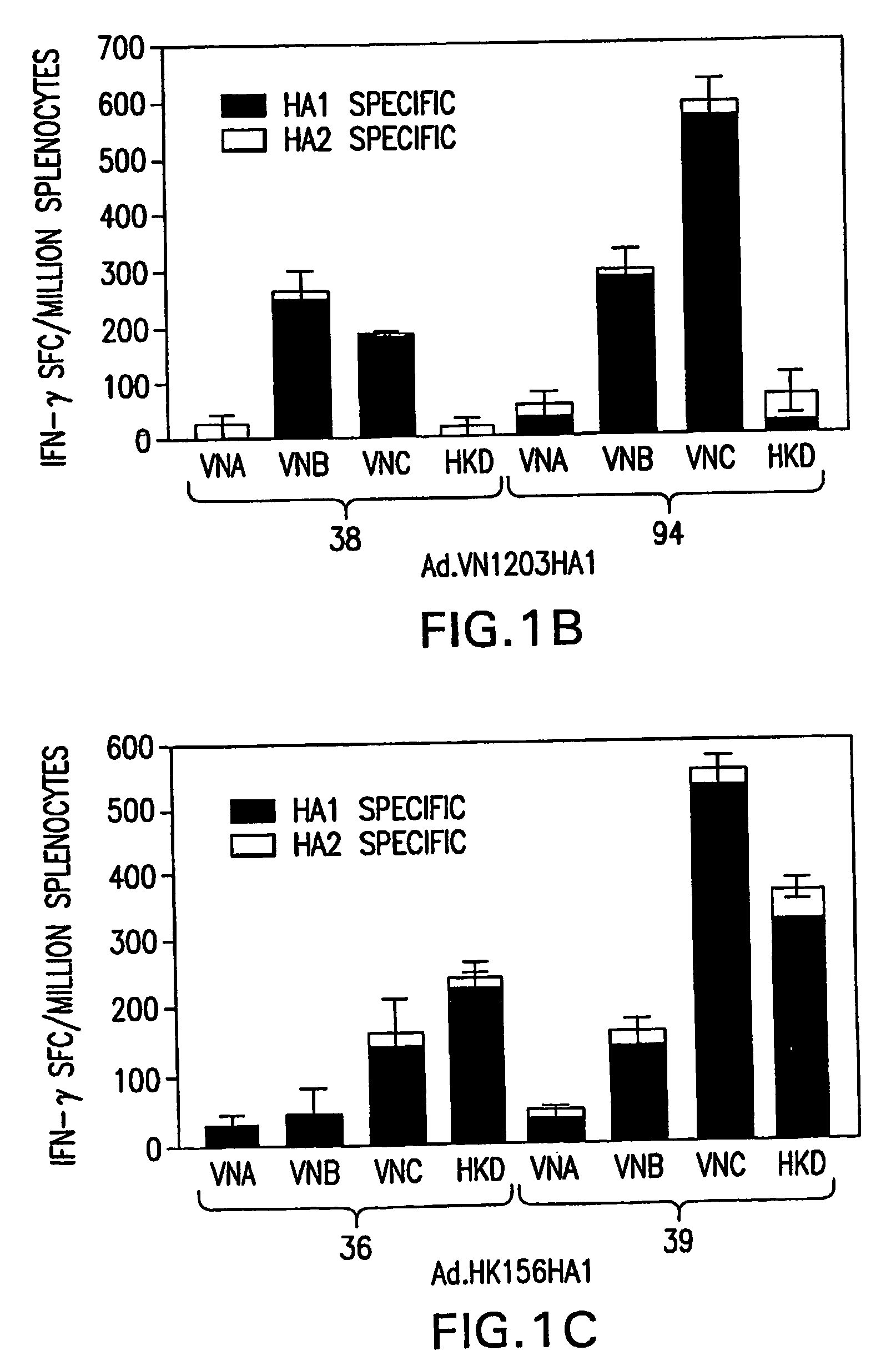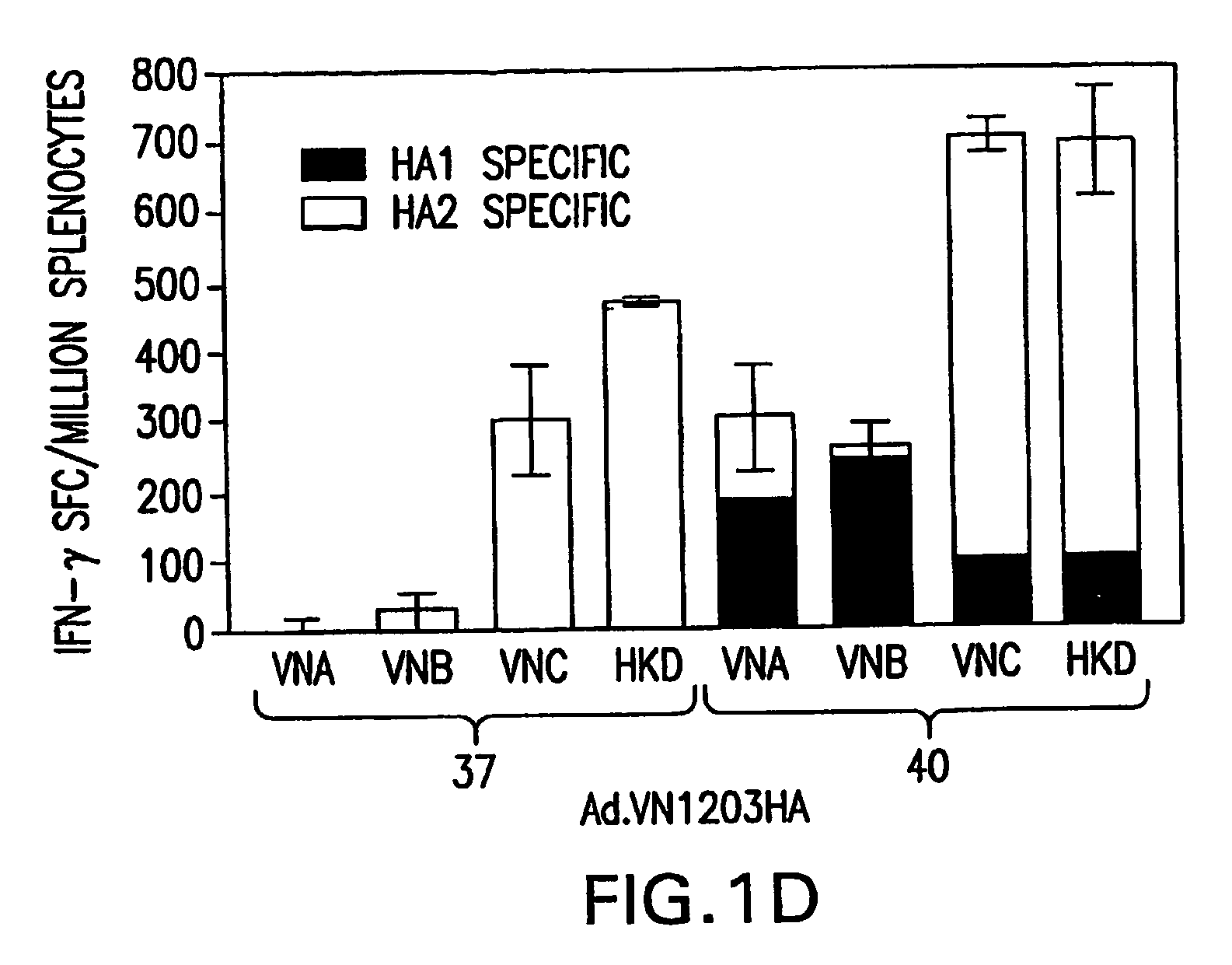Vaccines for the rapid response to pandemic avian influenza
a technology for avian influenza and rapid response, applied in the field of influenza vaccination, can solve the problems of limited influenza vaccination strategies, constant and permanent changes in the antigenic composition of the virus, and severe hinder the ability to control the pandemic spread of avian influenza, so as to increase the level of cellular and/or humoral immunity, and reduce the risk of infection
- Summary
- Abstract
- Description
- Claims
- Application Information
AI Technical Summary
Benefits of technology
Problems solved by technology
Method used
Image
Examples
example 1
6.1. Example 1
Generation of Adenoviral Vectors Expressing Influenza
[0071] Three E1 / E3-deleted adenovirus serotype 5-based vectors were generated. These vectors express codon-optimized influenza A / Vietnam / 1203 / 2004 (H5N1) (VN / 1203 / 04) full length Hemagglutinin (HA) or HA1 sub-unit (Ad.VN1203.HA, Ad.VN1203HA1, respectively) and influenza A / Hong Kong / 156 / 1997 (H5N1) (HK / 156 / 97) HA1 (Ad.HK156HA1). Codon optimization and gene synthesis techniques (Gao, supra) yielded increased expression levels of viral antigens when compared with the wild type sequence and allowed generation of the recombinant transgene without the use of H5N1 virus. Generation of the recombinant adenoviral vectors was completed 36 days after receiving the 2004 Vietnam strain influenza VN / 1203 / 04 HA sequence from the Centers for Disease Control, illustrating the rapidity for adenoviral-based vaccine development in accordance with the present invention.
6.1.1. ELISPOT Assay for IFN-γ
[0072] Ninety-six well membrane-coate...
example 3
6.3. Example 3
In vivo Immunization in Mice
6.3.1. Influenza Viruses
[0077] Influenza viruses used in this study were A / Hong Kong / 156 / 97 (H5N1) (HK / 156 / 97) and A / Vietnam / 1203 / 2004 (H5N1) (VN / 1203 / 04). Virus stocks were propagated at 37° C. in the allantoic cavity of 10-day-old embryonating hens' eggs for 26 hours and aliquoted and stored at negative 70° C. until use.
6.3.2. Gene Synthesis and Adenoviral Vectors Construction
[0078] HA, HA1 and HA2 genes from VN / 1203 / 04 and HA1 gene from HK / 156 / 97 were codon-optimized using the UpGene algorithm (www.vectorcore.pitt.edu / upgene.html) by overlapping oligonucleotides as previously described. Gao, supra. E1 / E3-deleted adenoviral vectors expressing the codon-optimized genes were constructed using Cre-lox recombination into the adenoviral packaging cell line CRE8. Hardy, S. et al., J Virol. 1997, 71:1842-1849. The recombinant adenoviruses were propagated in CRE8 cells, purified by cesium chloride density gradient centrifugation and dialysis, ...
example 4
6.5. Example 4
In vivo Immunization of Chickens
6.5.1. Methods
[0085] Influenza viruses used in this study were A / Hong Kong / 156 / 97 (H5N1) (HK / 156 / 97) and A / Vietnam / 1203 / 2004 (H5N1) (VN / 1203 / 04). Virus stocks were propagated as described in Example 3. Gene synthesis and adenoviral vector construction was performed as described in Example 3.
[0086] For avian studies, three-week old specific pathogen free single comb white leghorn chickens from an in house flock (SEPRL, USDA) were used. Groups of 10 chickens each were immunized with an intranasal or subcutaneous administration of 5×1010 virus particles of Ad.VNHA or AdΨ5. At 6 weeks of age chickens were challenged with 106 EID50 of VA / 1203 / 04 virus intranasally through the choanal slit to determine protection. The chickens were observed daily for illness, weight loss and death for 14 days post infection. Serum was taken at 3, 6 and 8 weeks of age for detection of hemagglutination inhibition (HI) antibodies.
[0087] HI and ELISA assays. I...
PUM
| Property | Measurement | Unit |
|---|---|---|
| temperatures | aaaaa | aaaaa |
| pH | aaaaa | aaaaa |
| pH | aaaaa | aaaaa |
Abstract
Description
Claims
Application Information
 Login to View More
Login to View More - R&D
- Intellectual Property
- Life Sciences
- Materials
- Tech Scout
- Unparalleled Data Quality
- Higher Quality Content
- 60% Fewer Hallucinations
Browse by: Latest US Patents, China's latest patents, Technical Efficacy Thesaurus, Application Domain, Technology Topic, Popular Technical Reports.
© 2025 PatSnap. All rights reserved.Legal|Privacy policy|Modern Slavery Act Transparency Statement|Sitemap|About US| Contact US: help@patsnap.com



